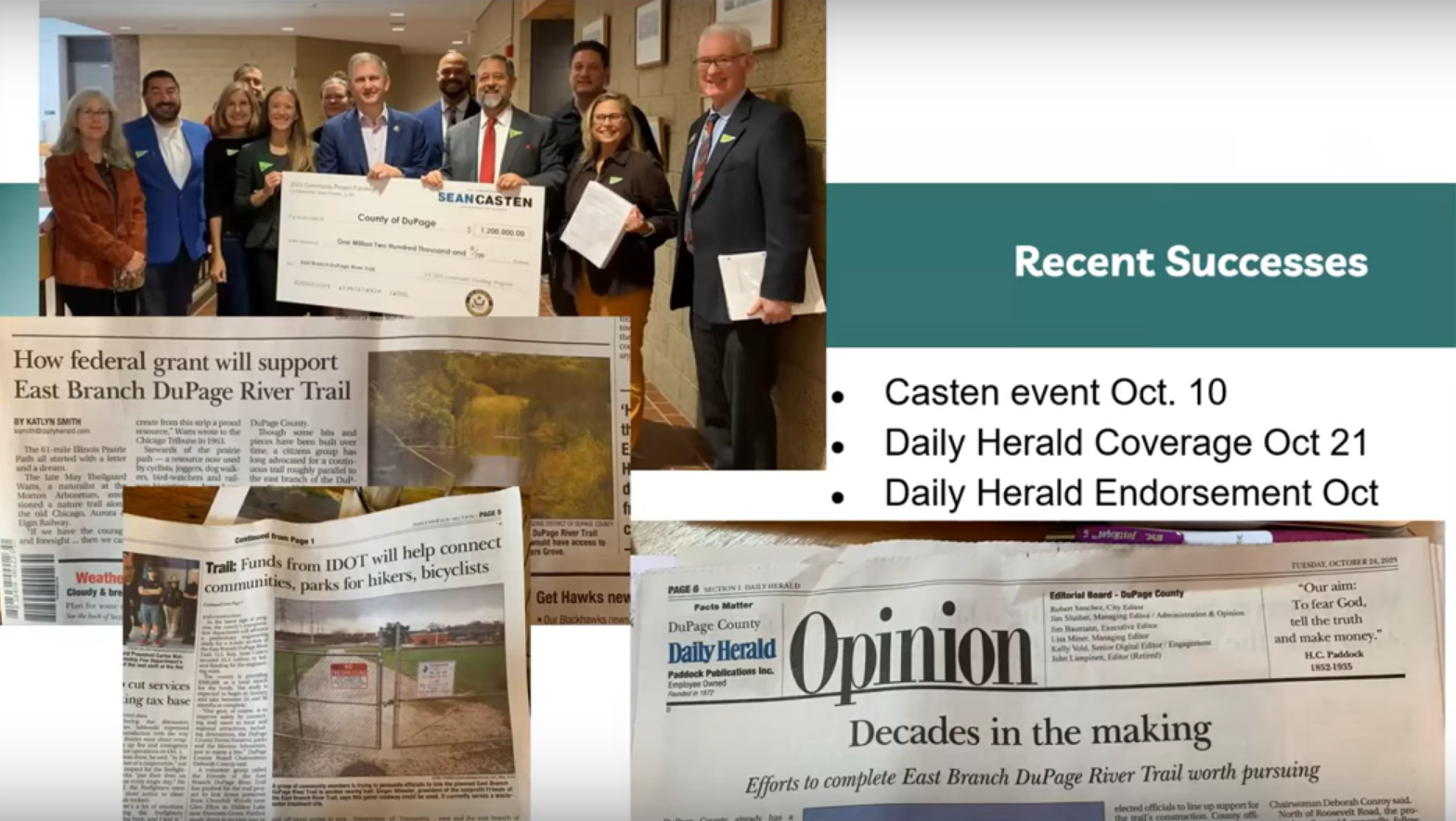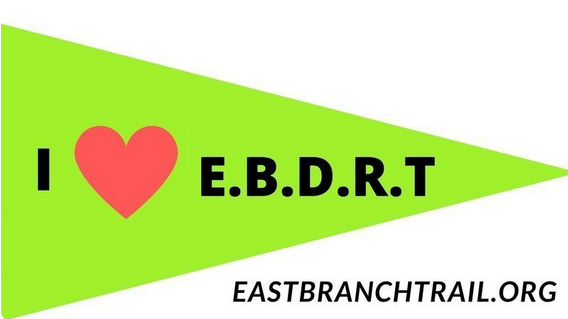In central DuPage County, a vision took root in the 1980s for a 28-mile regional trail meant to link communities and allow access to the natural environment west of I-355.
But progress on the trail was sluggish for many years.
Then trail development kicked into a higher gear when a group formed that was dedicated to completing the trail.
This north-south trail was originally conceptualized as an off-street non-motorized path for DuPage County residents west of I-355, roughly running between Lombard and Glen Ellyn and connecting isolated pockets of forest preserves with parks, waterways and several municipalities.
After a series of starts and stops over the last 20 years, the trail project gained momentum when Ginger Wheeler and Libby Ahern stepped in. In 2017, they founded the Friends of the East Branch DuPage River Trail, a small volunteer organization that has worked steadily to encourage residents to sign the group’s petition to develop the trail.
“For our group, [the East Branch DuPage River Trail is] an elephant,” said Wheeler, president of the Friends of the East Branch DuPage River Trail. “We’re trying to figure out how do you eat an elephant, and we’re eating it one bite at a time.”
Since 2017, the Friends of the East Branch DuPage River Trail has been building awareness for the trail and the group’s petition. Members of the group have attended local government meetings and events and tabling activities, maintained regular contact with local government representatives, hosted its own events, and gave presentations to groups and stakeholders.
One of the biggest challenges it overcame was bringing the various stakeholders together. Because the East Branch DuPage River Trail runs through areas that are overseen by various public agencies and entities, it was difficult and complex to persuade them to work together and support this endeavor, according to Wheeler.

“This whole area is governed by a bunch of different organizations. The hardest part was getting together all these organizations who have the decision-making power,” Wheeler said. “They’re almost all public or quasi-public organizations like Commonwealth Edison and [the Illinois Department of Transportation] as well as different parks and the Forest Preserve of DuPage County and so forth. But [we needed to get] them all at the table and making decisions.”
Those advocacy efforts paid off. In 2019, the DuPage County Division of Transportation initiated an alignment study for a 4-mile connector trail along the East Branch DuPage River Trail between St. Charles Road and Butterfield Road, providing connectivity to the Great Western Trail and the Illinois Prairie Path. The project will now move on to the engineering phase, having secured a $1.2 million federal grant and $210,000 to fund it.
Now the Friends of the East Branch DuPage Trail are committed to maintaining the momentum of its success. “Our challenges now are getting the money in. And then once it is in, tracking it, making sure it’s going where the county said it would go. We are the watchdogs,” Wheeler said.
“We need to continue to advocate,” she added. “We need to continue keeping our supporters engaged. We’re a small group of 10 people. We don’t have memberships. We’re not asking people for money. We are just asking them to sign our petition. That’s it. That’s all we have. That’s our ammunition to keep this project moving forward.”
During a recent webinar hosted by Active Transportation Alliance, advocates for several west suburban trails shared how communication, collaboration, resourcefulness, and tenacity have been key to successfully advocating for the creation, expansion and maintenance of these trails. This blog post was drawn from the webinar.

